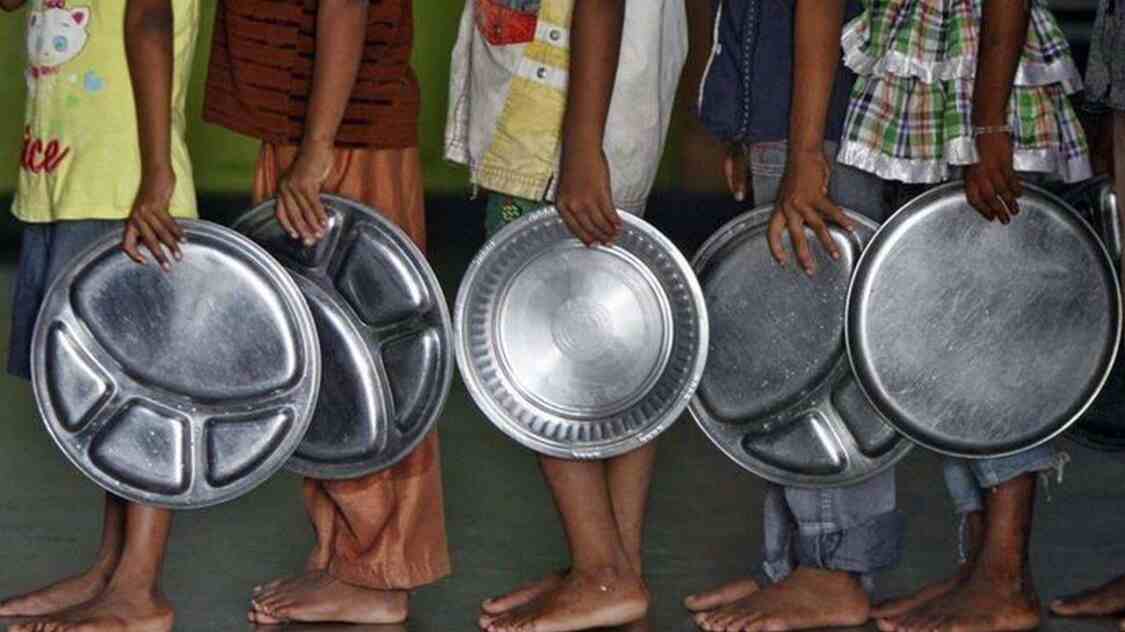All our hungry children
India’s consistent poor performance on the Global Hunger Index is a matter of deep concern that points to the acute undernutrition of the nation’s children

The pandemic has been hard on all but the impact on the poorest of the poor in India is staggering. The reverberations of lockdowns, debilitating second wave, and the slow recovery of businesses, has ensured a precarious situation for the less fortunate. India has slipped 7 places and now occupies the 101st position in the recently released Global Hunger Index (GHI). We are even worse off than our neighbours Pakistan, Bangladesh, and Nepal, and performing only slightly better than Afghanistan, which is no consolation. China, Brazil, and Kuwait joined 15 other countries to share the first place with a GHI score of less than five.
The report by the Irish humanitarian agency, Concern Worldwide, and German organisation, Welthungerhilfe, termed the situation in India as "alarming". India ranked 102 on the Global Hunger Index in 2019 and improved to 94 last year before its descent to 101 this year. Earlier in the year, the Union government had raised questions on the methodology and data accuracy of the survey. The latest numbers were released even after India raised concerns with the surveying organisations convinced of the methods to calculate hunger.
In reality, whether it's 94 or 101, this level of hunger in the country should be worrying for us all. As one of the largest food producers in the world, these grave numbers are inscrutable. The report also states that our GHI score also lessened from 38.8 in 2000 to 28.8-27.5 between 2021 and 2021. To be 101 out of 107 nations is both embarrassing and shameful. Are we unable to feed our children despite the subsidized grains and free rations? Where is the gap and how do we plug it?
GHI is calculated on undernourishment, child wasting (low weight children below five years of age), child stunting (kids below five who haven't grown in height due to undernutrition), and child mortality (death rate of children under five years of age). India has the highest child wasting rate worldwide, the report states. From 17.1 per cent in 1998-2002 to 17.3 per cent in 2016-2020, the problem of child wasting is as much a legacy issue as it has been exacerbated by the pandemic.
The Global Hunger Index maps hunger with a view of eradicating hunger worldwide by 2030. 'Zero Hunger by 2030' is one of the Sustainable Development Goals set by the United Nations, and India has been found wanting on the issue of child nutrition. India has improved its performance in child mortality, child stunting, and undernourishment. But wherever India is doing better, that progress has been slow and almost painful. In 2000, the hunger level in India was "alarming" and we have improved levels to fit in the "serious" category before slipping back into "alarming" this year.
We have consistently failed to provide healthy, well-rounded diets for our children. We need more budgetary allocations specifically aimed at improving child nutrition. The total allocations for the Union budget 2021-22 upped by 14.5 per cent; but the funds towards child nutrition plummeted by 18.5 per cent compared to 2020-21. According to a report by 'Down to Earth', shortfalls in implementation have also added to our failure in tackling child wasting. "The 2020 Comptroller and Auditor General of India audit of ICDS revealed that out of Rs 1,042 crore allocated, only Rs 908 crore was actually disbursed to state governments. Of the approximately Rs 4,300 crore released under POSHAN Abhiyaan from March 2018 to December 2019, only around 1,570 crore had been spent," the report stated.
The Common Application Software (CAS) set up under the government scheme, POSHAN Abhiyaan, meant to monitor child and pregnant/lactating mother's nutrition in real-time, also needs effective implementation. Action has to be on all fronts if we are to improve our standing in the Global Hunger Index. After all, the children of today are the citizens of tomorrow. And it should be our main priority to equip them with a healthy life.
The writer is an author and media entrepreneur. Views expressed are personal



